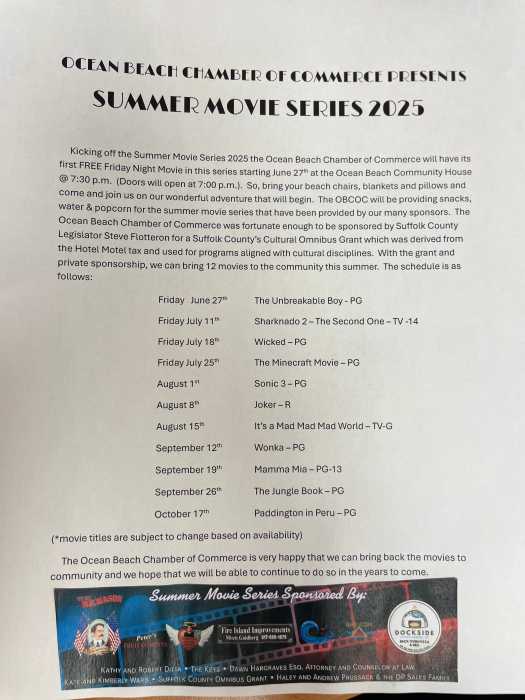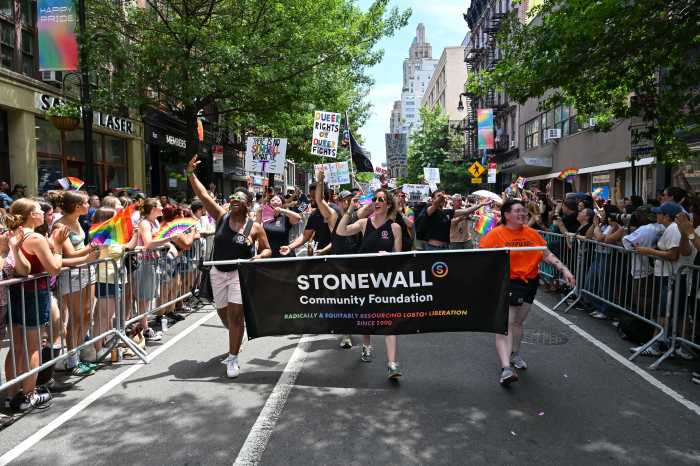A Forest City Ratner executive said he expects most shoppers at the soon-to-open
Atlantic Terminal shopping mall will drive rather than take mass transit.
Bruce Bender, a Forest City Ratner executive vice president, made the
remarks this week in response to questions about the company’s plan
to end residential parking at the ailing Atlantic Center, across the street
from Atlantic Terminal.
“People are going to walk or drive, they’re not going to take
mass transit,” Bender told The Brooklyn Papers, speaking of the increased
need for parking with the nation’s second largest Target department
store anchoring the new mall.
He said people would not likely carry the goods they purchase at the mall
on a train or bus and noted that the garage, built for the long-troubled
and critically panned Atlantic Center mall, was always intended for retail
shoppers.
“We don’t want people parking on the streets,” he said.
The new Atlantic Terminal shopping center is set to open on July 25. The
new building does not include any parking spaces of its own.
Bender’s comments surprised many residents and community officials,
who believed the developer’s intent was to encourage the use of mass
transit since the mall and office complex was built atop one of the city’s
largest subway and commuter rail hubs.
The 650-space parking garage beneath the Atlantic Center mall — which
is currently undergoing a facelift — will be used exclusively for
parking related to the two malls and the office tower that is part of
Atlantic Terminal. A pedestrian bridge over Fort Greene Place will connect
the malls.
Even before Bender’s remarks, Fort Greene Councilwoman Letitia James
voiced concern.
“Your company’s new policy is egregiously irresponsible, forcing
long-time customers to look for new parking in an already tight market,”
James wrote in a letter to Michael Beck, president of Edison Parking,
which operates the facility.
Forest City Ratner began construction on the 940,000-square-foot Atlantic
Terminal mall and office tower last year.
In addition to inconveniencing residents, James fears Forest City Ratner
is encouraging more employees and shoppers to drive to the mall and office
complex.
“Your policy will significantly add to traffic backups, gridlock
and other serious traffic problems,” James wrote in the letter, which
was also signed by Rep. Edolphus Towns, state Sen. Velmanette Montgomery
and Councilman David Yassky.
Declining to directly confront Bender’s statement, Yassky spokesman
Evan Thies said, “I would hope [Forest City Ratner] would encourage
people to use mass transit because downtown cannot handle such a dramatic
change in traffic flow without some serious infrastructure changes.”
Adding to their concern is Ratner’s plan to build the borough’s
tallest building, a massive, 620-foot-tall skyscraper, as well as two
other office towers and a basketball arena just a block away from Atlantic
Terminal. That 19,000-seat arena, which would house Ratner’s New
Jersey Nets, will provide another 3,000 parking spaces.
In addition to a nearly 200,000-square-foot Target, the new mall will
also include a Chuck E. Cheese children’s party facility, a Red Lobster
restaurant, DSW Shoe Warehouse, Daffy’s clothing store, A Children’s
Place and McDonald’s among other retail and food shops.
The Bank of New York anchors the 295-foot-tall glass-and-steel office
tower above the mall. The company, forced to relocate from Lower Manhattan
after 9-11, moved into the building last month.
The mall and office tower sit on a 3.6-acre lot — bounded by Flatbush
Avenue, Atlantic Avenue, Fort Greene Place and Hanson Place — at
the nexus of Fort Greene, Park Slope and Downtown Brooklyn. The entire
$240 million project, nearly half of which was funded with tax-exempt
Liberty Bonds, was built above the Atlantic Avenue commuter rail and subway
hub, where the Long Island Rail Road and 10 subway lines converge.
“We are concerned about a new development being car dependent, especially
with all the trains nearby,” said Kit Hodge, a campaign coordinator
for Transportation Alternatives, a group that advocates the use of mass
transit, bicycles and foot power.
“New York is a walking city, and we take public transportation. You
begin to wonder who the store is catering to, to New Yorkers? Why is the
city not working with [Ratner] to fit in better with the neighborhood,”
said Hodge, noting the wealth of public transportation at the mall.
According to Hodge, stores in Manhattan like Bed Bath & Beyond have
implemented delivery services to enable people to shop without cars.
“So why doesn’t Brooklyn deserve the same treatment?” she
asked.
The 400,000-square-foot Atlantic Center mall, less than affectionately
referred to by neighbors as “the big ugly,” draws few cars to
the underground parking garage. Philip Habib, an environmental consultant
for the Atlantic Terminal project, has said the garage has a weekday occupancy
of only 30 percent.
Asked for estimates of the numbers of shoppers expected at the new mall,
Bender declined to answer.
“We’ll soon find out,” he said.
The lack of shoppers at the poorly designed Atlantic Center mall, which
even Ratner recently called a mistake, is why his company has allowed
Edison Parking Management to lease the parking spots to non-mall parkers
on a monthly basis.
For the past seven years Dorothi Paul has been parking her Saab convertible
in the garage. Because she generally takes the car out only on Sundays,
and only then if the weather is nice, Paul has grown to depend on the
garage.
But last week the 20-year Fort Greene resident received a letter from
Edison Parking explaining that she will no longer be able to use the garage.
Edison is terminating all monthly contracts at the end of June.
“I’m very upset,” said Paul, who is now scrambling to find
a replacement spot. She says it is “impossible” to find a spot
on the street in the densely populated neighborhood and that she also
worries about the security of her car, which is a convertible.
Councilwoman James, whose office is just a block away from the garage,
says she received almost 100 phone calls from irate residents about the
new policy. Most of the callers complained that their streets are already
clogged with traffic.
An Edison Parking spokesman did not return calls seeking comment.
Paul says the other nearby lots are either more expensive or just full.
Until earlier this year Paul was paying just $125 per month for her spot.
Last month the fee increased by $50, Paul said.
Her husband has decided to park his car on the street.
“But it’s impossible to find a spot now,” she said, noting
the influx of residents and merchants drawn to the rapidly gentrifying
neighborhood. “Before I could come home any time of the night or
day and just park in front of my house and I began to feel like it was
my spot. Now you have to seriously look for a spot, especially during
the day.”
























